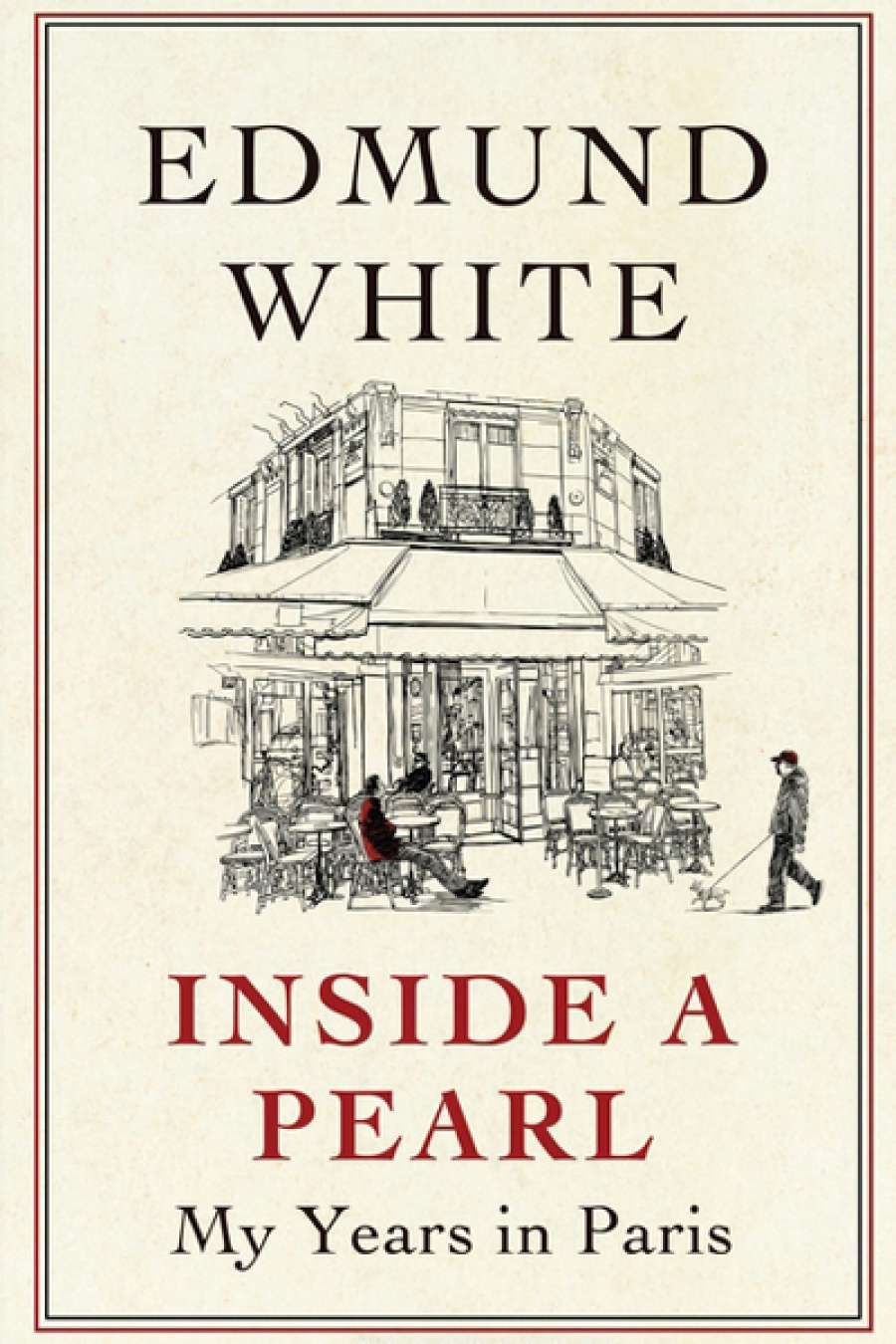
- Free Article: No
- Contents Category: Memoirs
- Review Article: Yes
- Article Title: Breathless
- Online Only: No
- Custom Highlight Text:
All writers mine their lives, some most clearly through combining the autobiographical and the fictional, so that, as with Christopher Isherwood, their works become a mixture of the self-revelatory and observations of the worlds in which they have lived. In more recent times, no one has more closely followed Isherwood than Edmund White, now the author of more than twenty books, professor of writing at Princeton, and a regular contributor to the New York Review of Books.
- Book 1 Title: Inside a Pearl
- Book 1 Subtitle: My Years in Paris
- Book 1 Biblio: $29.99 pb, 261 pp, 9781408837856
Isherwood pioneered contemporary gay writing, indirectly through his The Berlin Stories (1945) and then much more directly with A Single Man (1964), recently filmed and perhaps the most honest and least melodramatic gay novel of its time. White, who is thirty-six years younger, can claim to be the most distinguished gay novelist of his generation, and one who would not reject that term. Both he and Isherwood came from environments and histories that made one’s sexuality central to one’s persona, and White has played a distinguished role in lending support to gay and Aids movements at critical moments, although he is clearly more comfortable in salons than in committee rooms.
If White is best known for his semi-autobiographical novels, beginning with A Boy’s Own Story (1982), which achieved cult status, his range is extraordinary; he has written two American historical novels (Fanny: A Fiction [2003] and Hotel de Dream: A New York Novel [2007]), as well as a major biography of Jean Genet (1993), and some significant essays.
In 1983 White moved to Paris, and spent much of the following decade there, learning French and meeting an extraordinary range of Parisians. This book takes its title from a comment he made to a visiting American: ‘To me [Paris] seems so calm after New York. As if I’d already died and gone to heaven. It’s like living inside a pearl.’
Reader beware: I knew Isherwood slightly, and White far better, though I think our paths only crossed once in Paris. Indeed, the Paris of which White writes is in some ways an alien city to me, even though I spent almost a year of my life living there. But while I hung out in the late 1970s with gay radicals, White, a decade later, moved in le tout Paris. (Our worlds finally overlap briefly in this book, but not until page 202.)
 Edmund White (photograph by David Shankbone)
Edmund White (photograph by David Shankbone)
In some ways, there are echoes here of an earlier book by White about Paris, The Flâneur (2001), and of one of his best novels, The Married Man (2000). White acknowledges this when he writes of the deaths of two of his lovers from Aids. Inside a Pearl draws on both of these earlier books to reflect on the many years he lived in Paris, and the ways in which he used that time to both write and develop an extraordinary network of literary and social connections.
As usual, White ambushes the reader with his candour; he can move effortlessly from a rococo sentence (his original writing style) to heartbreaking sentences of great clarity. He is at his best when he captures an image or a passing character, less impressive when he seeks to generalise about ‘the French’, despite his own acknowledgment that such national generalisations are unlikely to move beyond clichés. Unfortunately, he resists such temptations when he devotes several chapters to his times in London, revealing a dislike of the English that borders on the satirical, despite his fondness for a number of (inevitably well-known) English figures.
Occasionally, White lapses into self-parody, as when he refers to himself as ‘socially passive’; this comes on page 186, after the reader is already exhausted from the round of parties and dinners that White has both hosted and attended. Inside a Pearl can be read as proving Gore Vidal’s adage that ‘in the world of stars no one is a stranger’. Inadvertently, the funniest line in the book is when he writes of the English writer Alan Hollinghurst: ‘Alan has a Proustian fascination with titles and stately homes, although like Proust, he is also critical of snobbism.’
‘And everywhere there is sex; this is, after all, a book by Edmund White ...’
White is a breathless name-dropper, so that at times this book reads like Hello! magazine, with paragraphs that manage to mention Paloma Picasso, the wife of the Italian prime minister, Prince Albert of Monaco, and the singer Dalida in the space of two sentences, all without telling us anything meaningful about any of them. But where White writes of genuine friends he can be moving and empathetic, above all in the constant references to his best friend in Paris, Marie-Claude de Brunhoff, who introduced him to Paris society.
And everywhere there is sex; this is, after all, a book by Edmund White, whose writings have done more than anyone else’s to make the details of a certain sort of gay male sexual exuberance familiar to a wide readership. Readers of White will be familiar with his glee at sexual disclosures, but where they are most interesting is when these show glimpses of Parisian lives far removed from the grand restaurants, dinners, and receptions that make up too much of the book. Indeed, I wish White had told us more about the lives of his casual encounters than he does about their genitalia.
White is one of the greatest stylists of his generation, and while this is a book to savour for those who are familiar with his other works, it also reminds us that at his best he can capture the essence of place, an emotion, a character in a single, well-toned sentence.


Comments powered by CComment